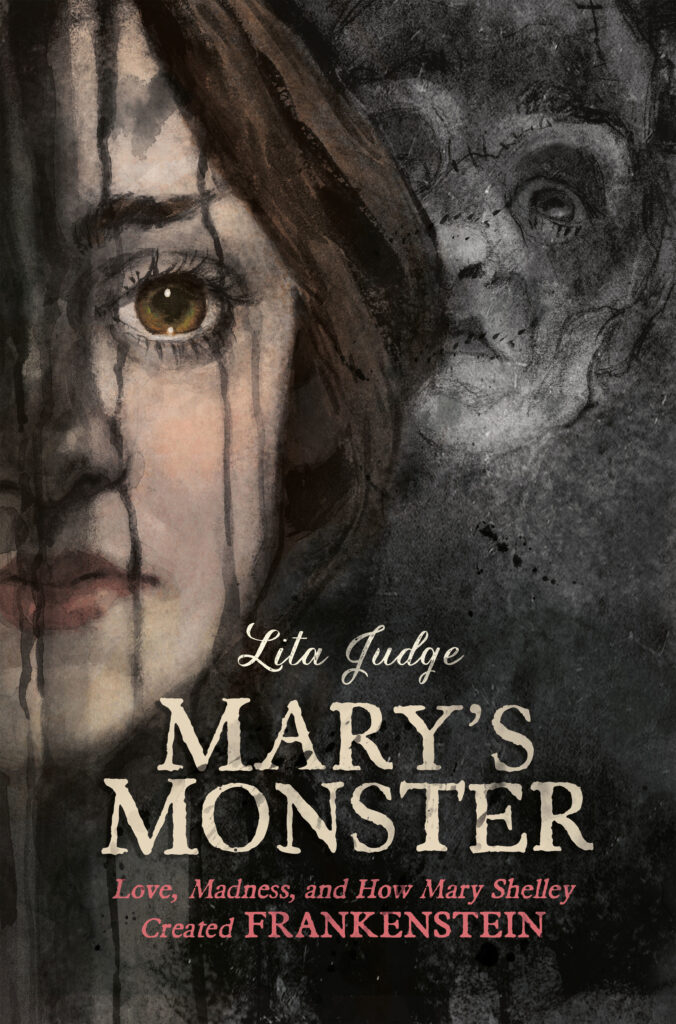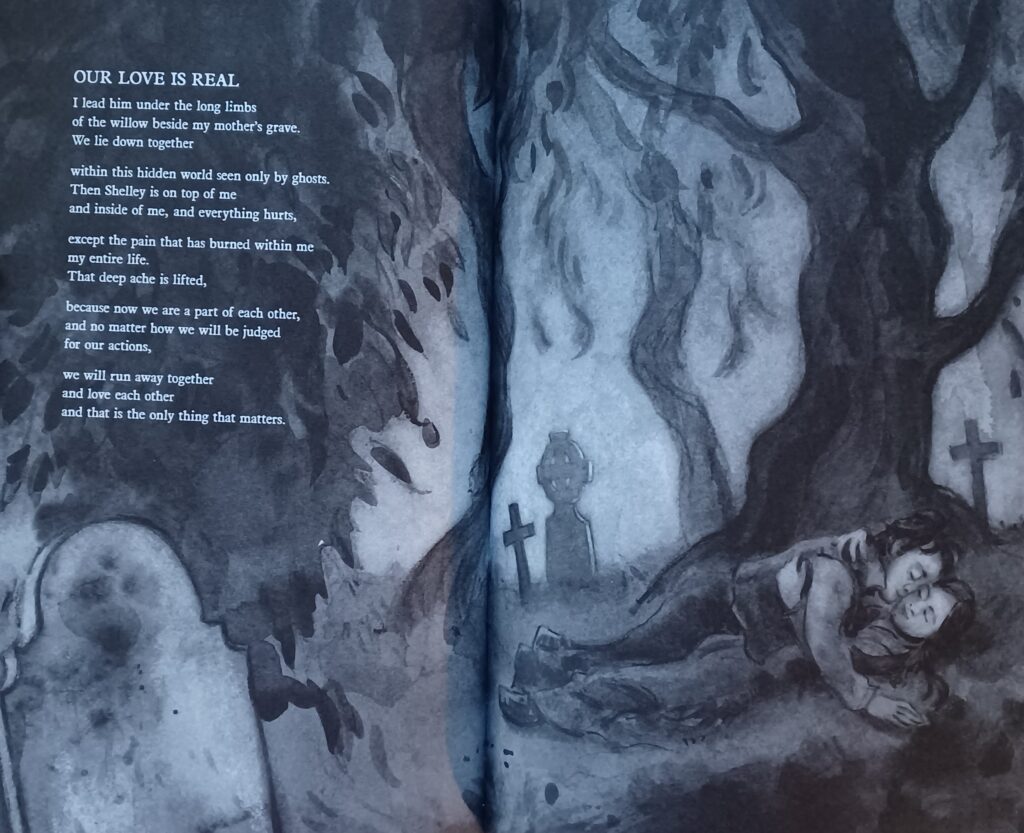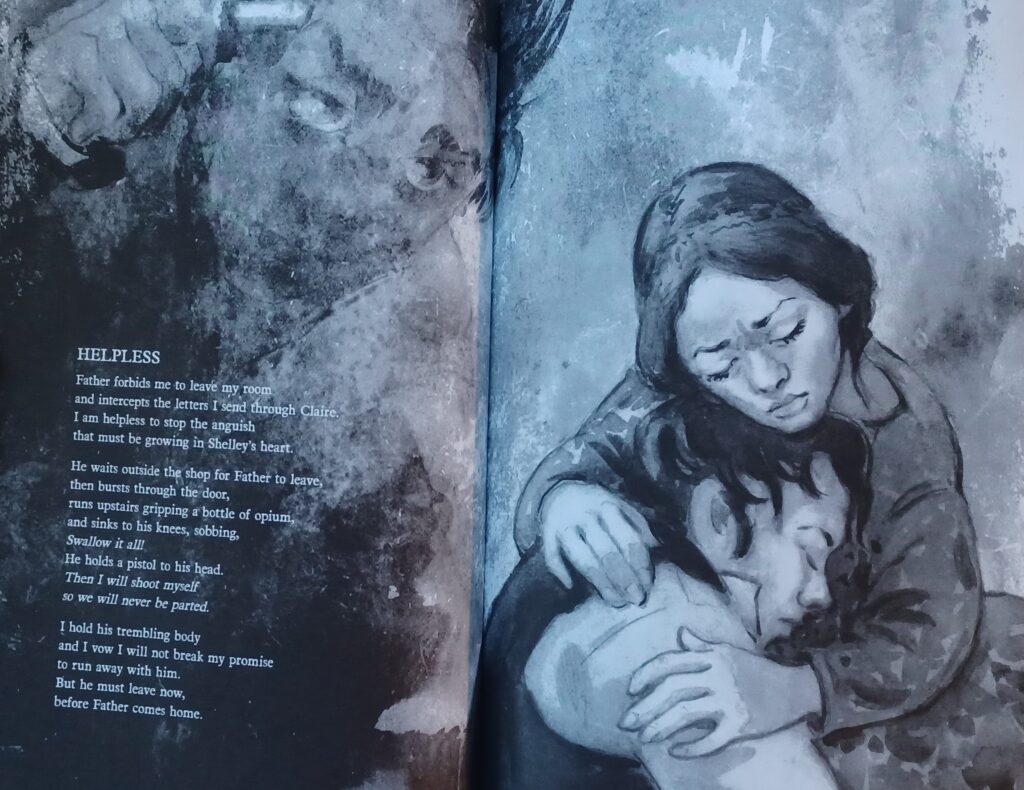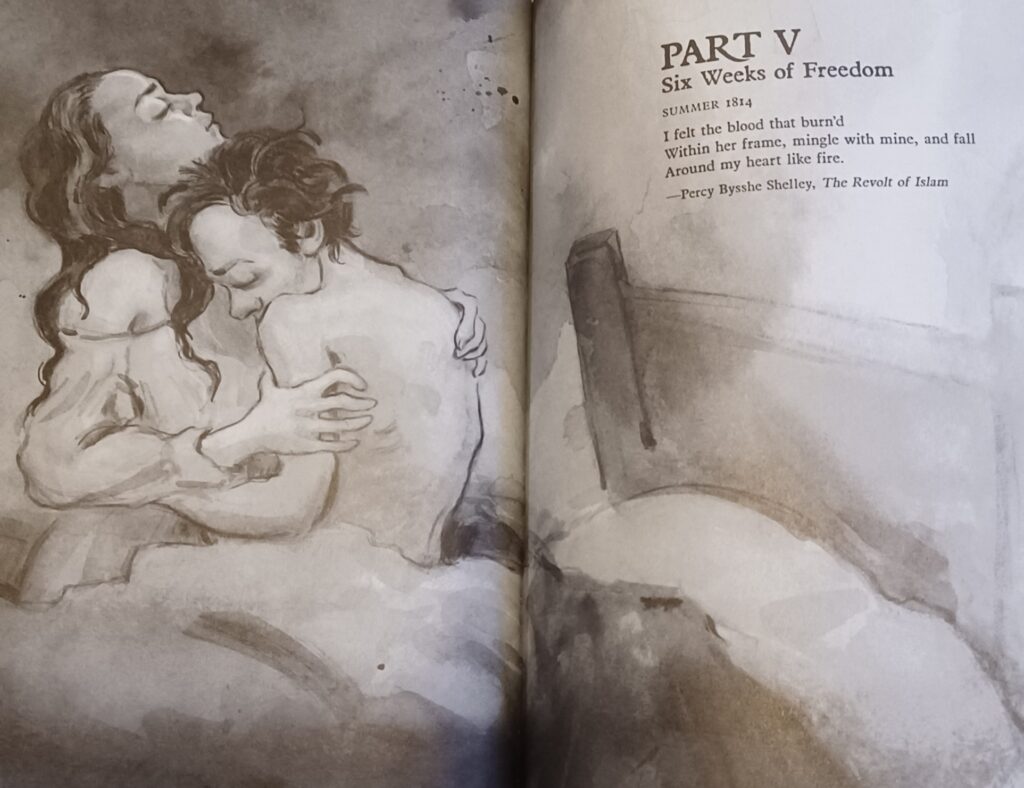
The subtitle of this book seems a bit misleading to me. It is not a study of the literary process or the merits of her famous book. After being dragged through Mary’s dysfunctional life in depressing monochrome, it feels like, “Lust, Madness, and Why Mary Shelley Created Frankenstein” would have been more accurate.
I first heard of Lita Judge when Tanya Arnold mentioned her book, One Thousand Tracings on an episode of Our Reading Life. It’s a beautiful story. I read a few of Judge’s other children’s books, including the ones that can be found at Biblioguides.
Because Judge’s previous books have been children’s stories on various topics, fiction and non-fiction, with lovely illustrations, I thought it was worth alerting parents that this one is entirely different. Rather than analyzing Mary Shelley’s life or Judge’s treatment of it, I will simply show you some of what your teens will be exposed to in Mary’s Monster.
The book trailer at Judge’s website says, “Discover the passion and the madness that compelled Mary Shelley to write the novel.” I ask, “Why should we? Why do young people need to know the sordid details of her life, the seeds of which were sown in her parents’ defiance of societal convention and rejection of Christian principles?” I also question the need to fill the minds of young people with vivid illustrations of immoral acts.
Defying the restrictions put on women, Mary was a girl brimming with ideas that women were equal to men and that all people were entitled to justice and freedom. She ran away with a married man, Percy Bysshe Shelley, who was a poet with radical political beliefs. Together the young couple fought against strict social conventions by daring to believe love and human reason could reform a tyrannical world.
Mary’s Monster, Introduction


